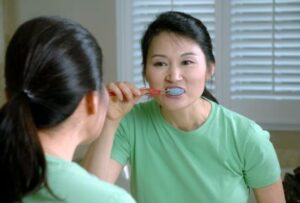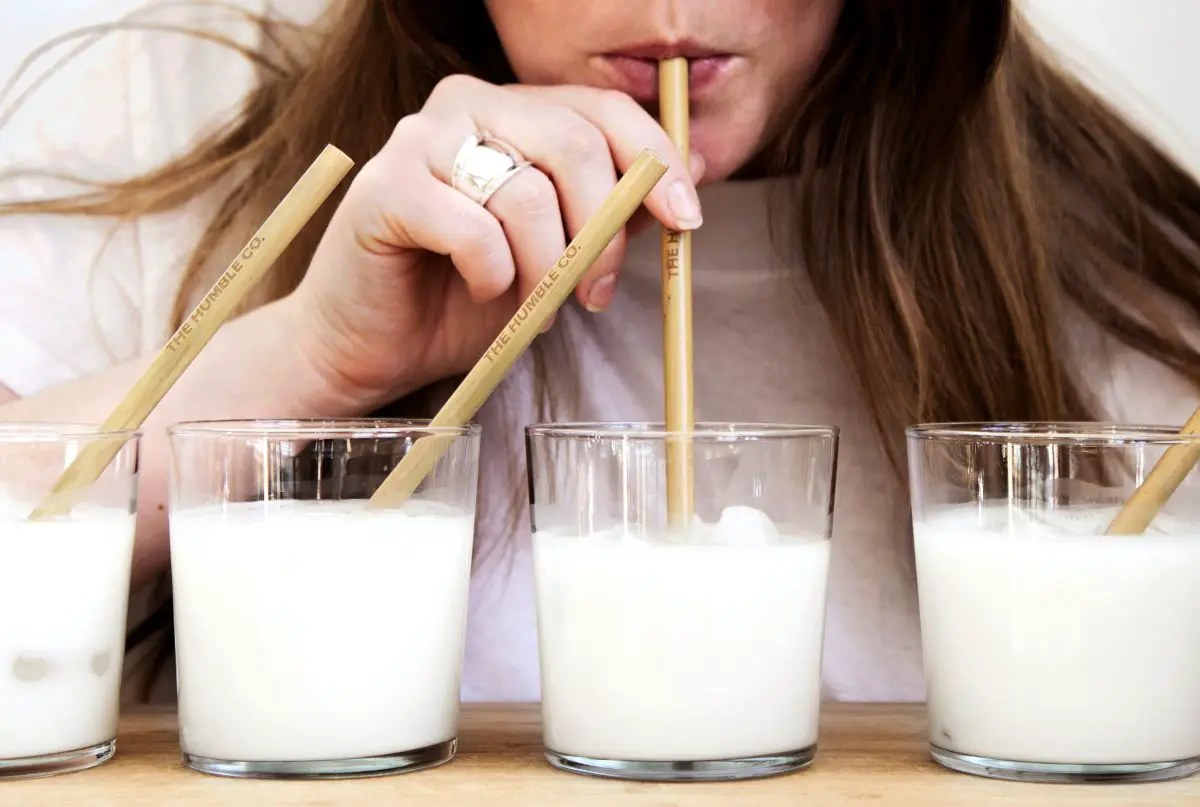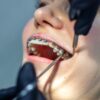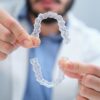Is Drinking From a Straw After a Cavity Filling a Good Idea?
Cavity fillings are such a common procedure, that often we tend to forget what the common precautions are after receiving the treatment. Recently, I had several cavities that needed to be treated, so I decided to finally confirm with my dentist if we are allowed to drink from a straw.
Can I drink from a straw after having a cavity filling? The answer is yes, you can drink from a straw after a cavity filling treatment. The straw is a convenient way of drinking, and since it is inserted directly into the cavity, there should be no issues with any kind of complication. Especially if you’re numb and cannot drink from a normal cup properly.
Having a cavity treated is a simple procedure that has a quick recovery time. However, certain precautions need to be taken into consideration after cavity treatment.
 What Are the Precautions to Take After a Cavity Filling?
What Are the Precautions to Take After a Cavity Filling?
After cavity treatment, it is important to be careful about your diet. If you are allowed to eat soft foods, make sure they are soft enough that you can chew them without hurting yourself.
Make sure not to eat anything hard or crunchy while the cavity filling is still fresh in your mouth. It will take around 24 hours before the cavity filling becomes strong again, so after this time try to avoid eating anything too tough for your teeth.
The other thing to consider is drinking from a straw after the cavity filling procedure. This has been proven to help with several issues related to tooth sensitivity after cavity fillings have been treated.
Drinking through a straw ensures that your enamel does not come into contact with hot or cold water directly, which can be painful. Drinking this way mitigates the risk of cavity fillings falling out after cavity treatment and cavity fillings coming loose again after cavity filling.
Straws Can Reduce Pain
Some studies also suggest that drinking through a straw can help reduce pain, as it keeps your enamel away from the damaged cavity filling causes to other teeth in the area. If you can drink through a straw without causing any discomfort or pain, it should be fine for you to continue drinking as normal following cavity treatment.
Remember that eating and drinking is not at all like brushing teeth, which has its own set of rules and precautions after cavity treatments. Although these two things might seem similar because they both take place in your mouth, there are several differences between having a cavity filled and then eating and drinking as usual afterward. Make sure to always go over cavity treatment with your dentist.
Can I Eat After a Cavity Filling?
You can eat after cavity filling treatments, but it’s best to wait for at least 24 hours so that your cavity filling is taken care of. While you should avoid crunchy foods or anything hard while you are waiting for cavity fillings to set in, there are other things to keep in mind when eating after cavity treatment.
Eat soft foods during the first 24 hours after cavity treatment. These kinds of foods should not be tough enough to require chewing; instead, they should be soft enough that you could easily mash them with your tongue if need be (without doing too much damage).
Also make sure these kinds of food aren’t hot or cold, as that could cause pain and discomfort where your cavity was treated.
After the first day, you can start eating as normal again. However, cavity fillings might still be a bit tender for another day or so after cavity filling, so you should still try to avoid things that require too much chewing.
Even if the cavity filling is already tough and healthy again after cavity treatments, it’s best to avoid crunchy foods until two full days after cavity treatment has been completed and you’re feeling better.
Can I Brush My Teeth After Cavity Filling?
You should not brush your teeth immediately following cavity filling because it can cause damage to the enamel of the tooth around where the cavity was filled in. If you agitate, scrub, or grind down too hard on cavity filling material (which is basically like superglue), it can fall off or become displaced.
After cavity filling, you should wait at least 24 hours before brushing your teeth again. This is so the cavity filling has a chance to harden and set into the cavity that was filled in.
You will need to be extra careful about cavity fillings after cavity treatment as well because it will still be relatively soft for a few days after cavity filling, putting it at risk of damage from vigorous brushing. After cavity treatments, give your cavity fillings some time before brushing again.
 Can I Use Mouthwash?
Can I Use Mouthwash?
No! Do not use mouthwash after cavity filling procedures because it will cause major problems with cavity fillings staying in place and as long as they are supposed to be. Mouthwash is a cavity filling’s worst nightmare, as it can do many of the same things that cavity fillings cannot handle.
Don’t use mouthwash after cavity treatment because cavity fillings need time to set properly. Even if you rinse your mouth out with water, avoid using mouthwash for at least 24 hours after cavity treatments were completed. Wait until cavity fillings have healed and toughened up before using mouthwash again.
Is It Normal to Feel Pain After a Dental Filling?
When you get a cavity filled and the cavity has been treated, it is normal to experience pain. However, you should also be able to tell if it is just slight discomfort or something more serious. If you are feeling severe pain, contact your dentist.
When getting a cavity filled, several different types of fillings can be used depending on where the cavity is located in your tooth. You may experience temporary sensitivity after having this cavity filled depending on which material was used during the procedure.
This type of filling is known as an “in-office” filling because it can be done in one visit. It will help lessen the pain associated with waiting for a second appointment to finish treatment.
Even if the cavity is small, your dentist may recommend putting a filling in that cavity to stop anything from getting bigger and causing you more pain. If this cavity gets big enough, you risk damaging the nerves and tissue inside your mouth…can make eating difficult…you may be recommended to get it filled as soon as possible.
If you were to not get the cavity filled and leave it untreated, eventually, this cavity could spread and cause an infection or abscess which can become very dangerous for your oral health.
How Long Can I Wait to Get a Cavity Filled?
Can you wait to get a cavity filled? It’s a pretty straightforward question, but it depends on the cavity. If you have one cavity that has just started hurting and you can’t wait to get it taken care of, then yes, it is probably something that should be taken care of right away.
However, there are just as many cavities that aren’t going to do any further harm if they’re not treated for a while yet. In this case, waiting until your next visit might be a better choice than making an appointment for five minutes from now.
In general, cavity fillings need to be completed within half a day since time does matter when bacteria start to intrude into the cavity space once again.
That being said, there is no reason to make an appointment right away unless you are experiencing a toothache. Even then, most cavity fillings can wait for their turn on the list if it means that another patient with more urgent needs gets treated first.
How to Prevent Cavities Long-Term
Eating lots of sugar isn’t good for your teeth as it provides food for cavity-causing bacteria on your teeth. Nutrition from vegetables and fruits is much better as it has more benefits than harmful effects on your mouth.
Try eating apples, carrots, or celery as a snack–they’re great alternatives! Also, milk and cheese have a lot of calcium that your body needs to keep strong bones and teeth healthy. If you don’t do dairy foods, try oatmeal instead! It has calcium too, and it’s good for meals of the day. Some kids even like to eat it as a snack!
A cavity can be filled at the dentist, but it might cost money and time out of your day. Prevention is much better than treatment because it’ll save you both time and money in the long run.
 The Benefits of Flossing
The Benefits of Flossing
When you floss, it gets rid of cavity-causing food stuck in your teeth. Flossing is very easy and quick to do! Just like brushing, only use floss once or twice a day – you can even do it after each meal if you want.
Flossing prevents unwanted bacteria from starting to grow and develop. If you floss, it provides a clean surface for your toothbrush to clean up food particles and cavity-causing bacteria.
The floss pick can reach areas of your teeth that your toothbrush cannot. If you don’t floss, all the cavity-causing food particles will stay stuck in your teeth while cavity-causing bacteria grow and develop into tooth decay.
Conclusion
Cavities can be prevented by eating nutritious food, brushing your teeth after every meal with toothpaste, flossing once or twice a day, and visiting the dentist for cavity-preventing checkups once every six months. Don’t forget to follow these precautions when recovering from a recent cavity filling!









